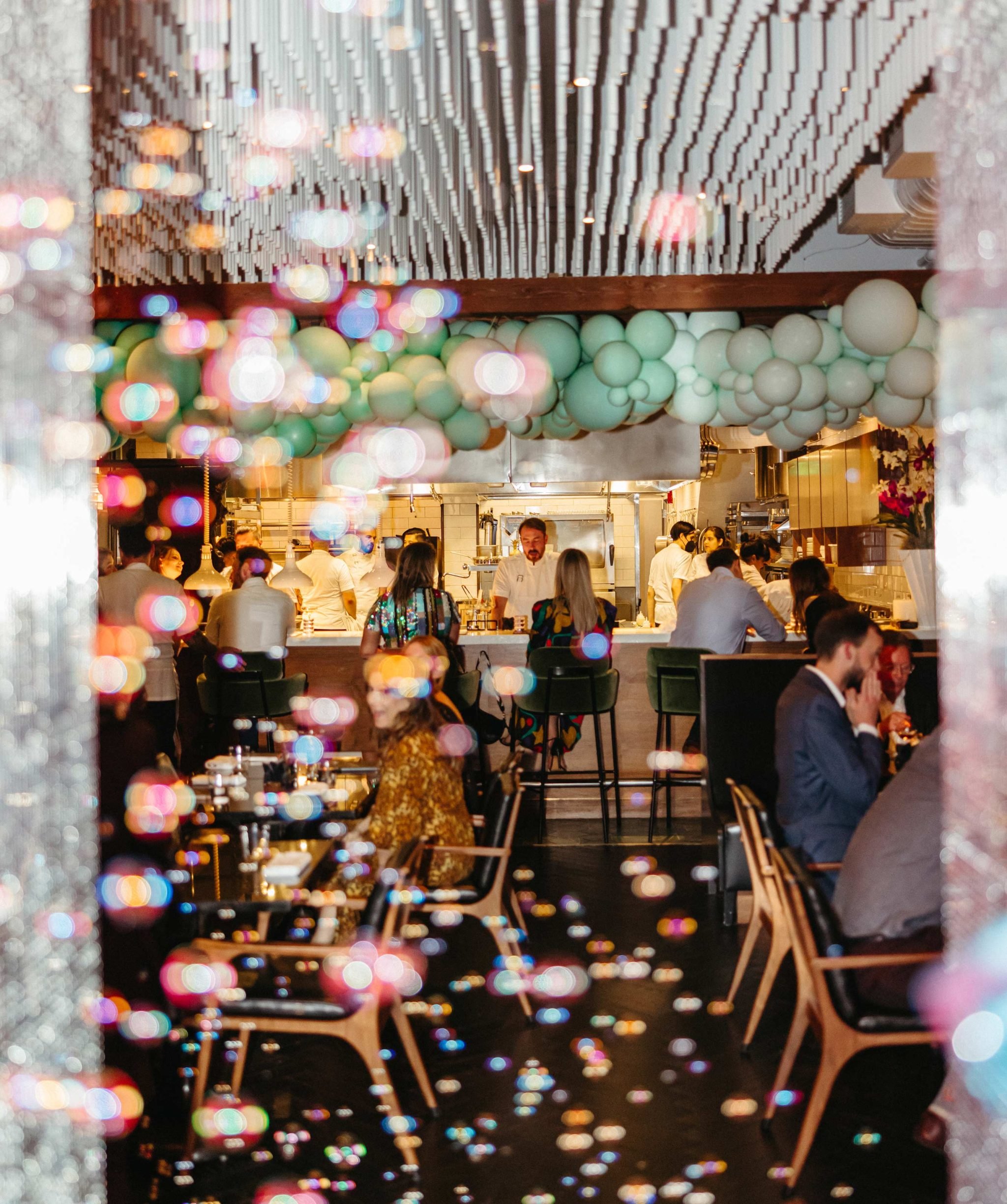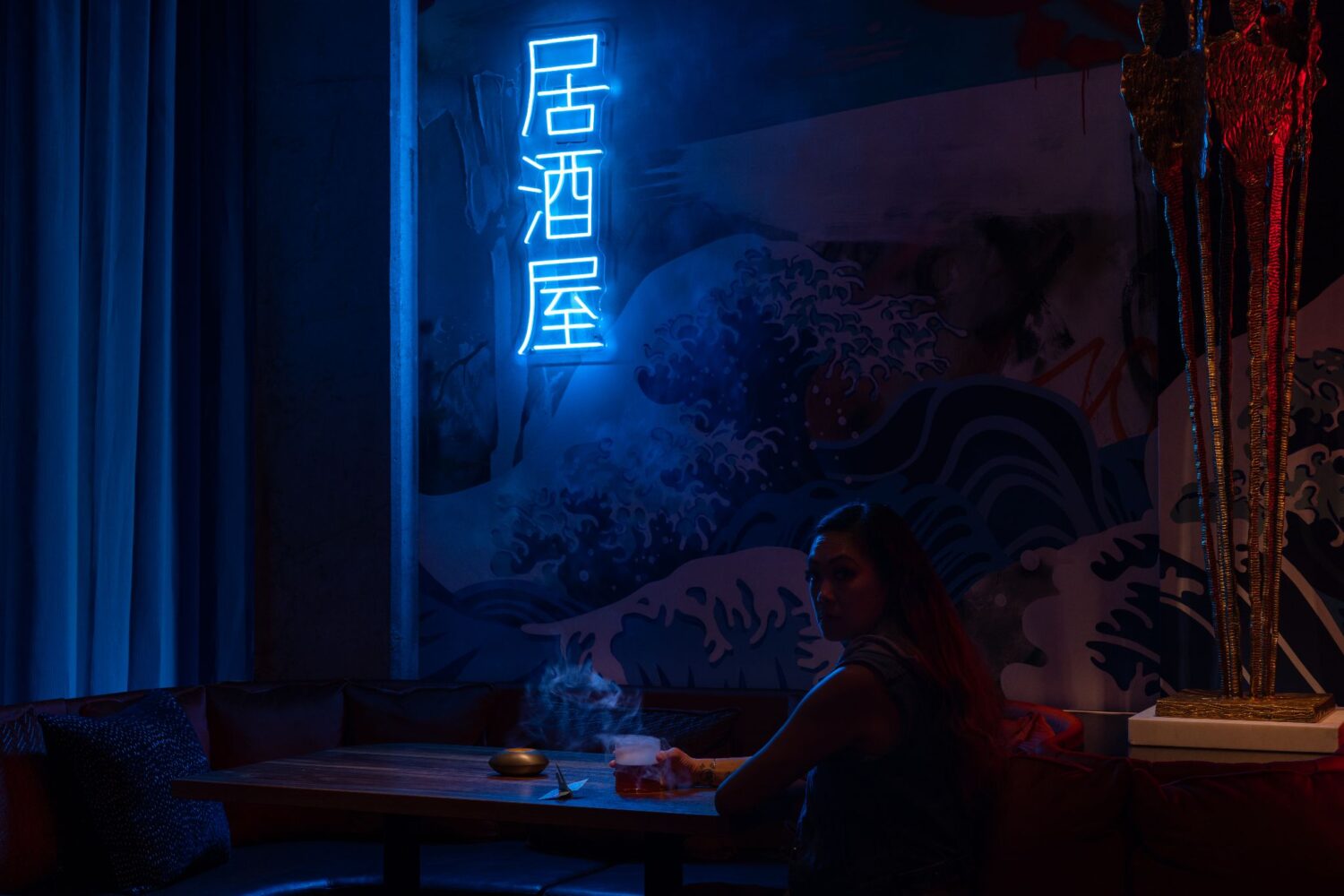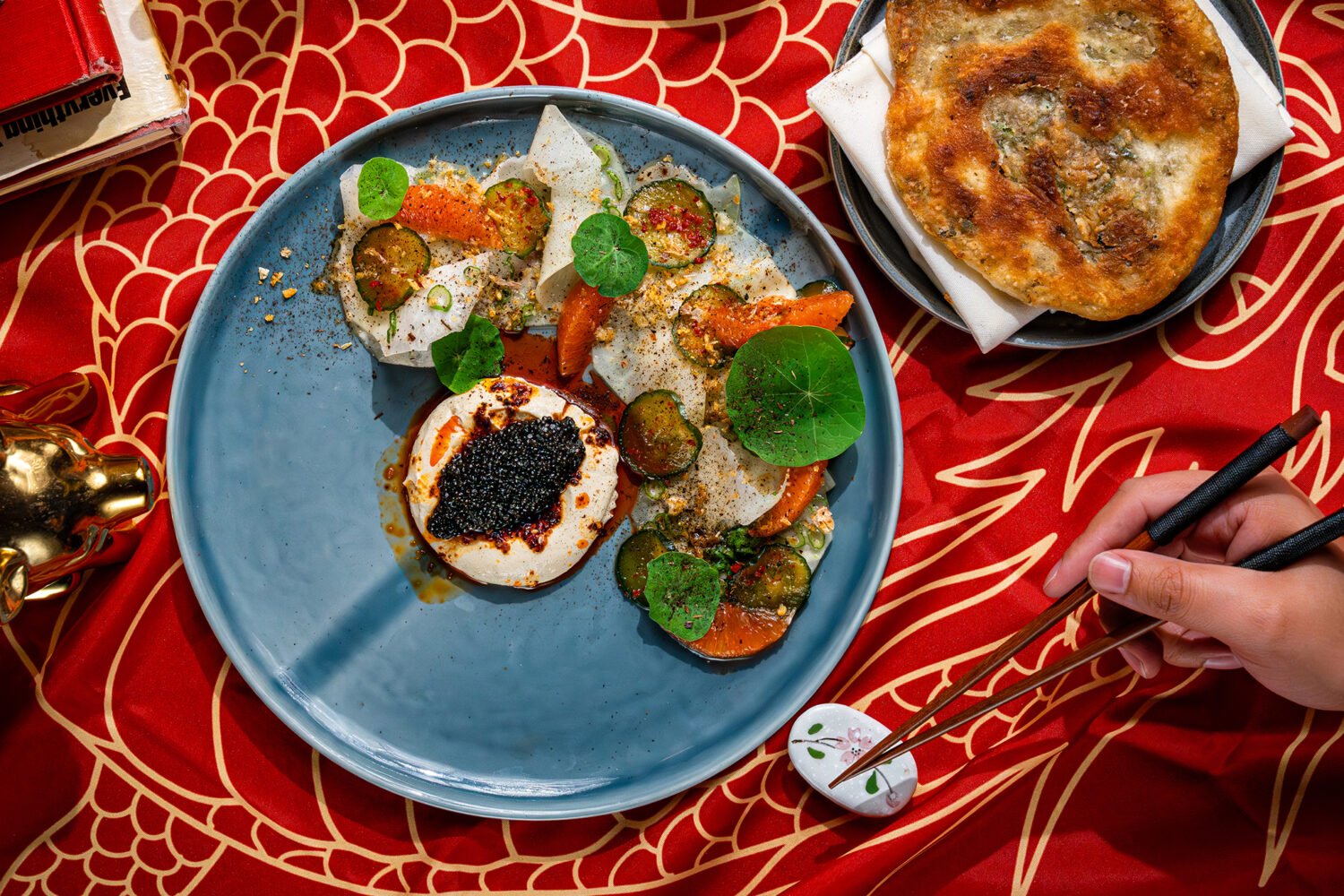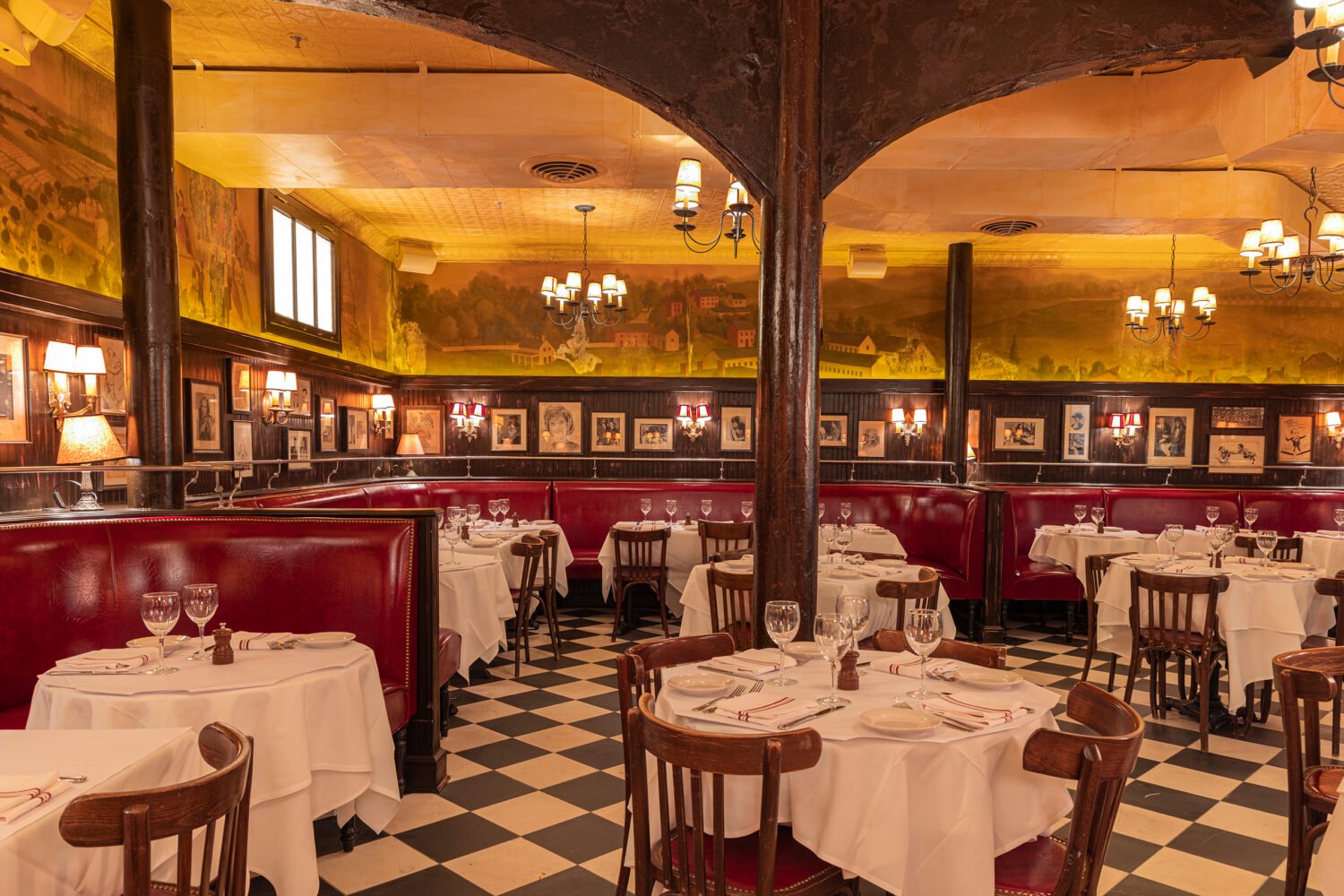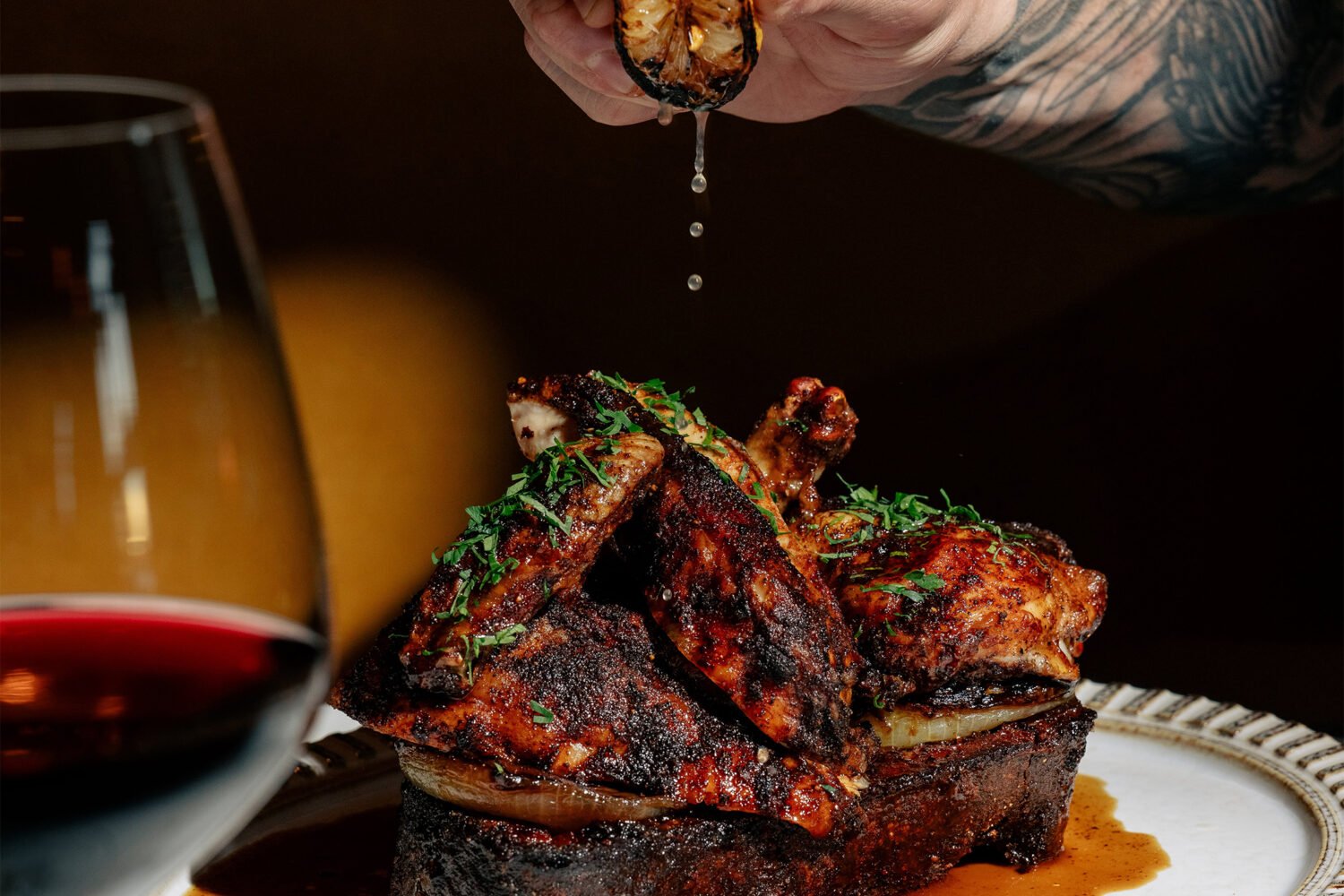Jônt
1904 14th St., NW.
The food at Jônt can be exquisite. Certain dishes on Ryan Ratino’s 15-course tasting menu—say, a leg of king crab spotlit perfectly in a shellfish consommé—are among the best I’ve had in recent memory. Nobody in town is lavishing so much attention on big-ticket ingredients both expected (Wagyu beef) and not (Miyazaki mango, which Ratino dispatches cooks to buy in New York).

The two-year-old dining room—perched atop the talented Ratino’s whimsical 14th Street restaurant, Bresca—is a place of unbridled luxury. Dinner kicks off with foie-gras-laced jelly doughnuts and rye tartlets heaped with black pearls of rare kaluga caviar. From there, you might try ishidai, a hard-to-find Japanese fish prized for its delicate sweetness, which Ratino bathes in a verdant buttermilk sauce and dollops with more caviar. There’s creamy Koshiibuki rice swirled with preserved Périgord truffle and even more king crab. And a slab of juicy, tender duck paired with duck sausage and a buckwheat-and-duck sipping broth. (Total time to create the dish: three weeks.) The two-and-a-half-hour dinner is finely calibrated to leave you neither stuffed nor longing for a midnight snack. A feat!

And yet.
Whether you should visit Jônt depends on a few things. First, your bank account. If you’re eating on the company dime—or are the type of person, like the guy a few seats over from me in the separate dessert room, whose “dad just put 25 mil” in his bank account—well, yay for you. If you’re in the pretty-much-everyone-else category, you should know that Jônt is the most expensive meal in the city. Dinner for two with a basic wine pairing runs about $1,500 when you factor in taxes and a 22-percent service charge. Upgrade to the $650 “F— It” pairing, with pours of Dom, a 2005 Sauternes, and a vintage Mersault, and the tab for two swells past $2,000. The cocktail menu, presented on a tablet, starts at $40—for a Manhattan.

There’s also the matter of the dining room, a windowless, narrow space lined with 16 bar seats. They overlook an open kitchen filled with several intensely concentrating cooks. Nineties hip-hop blares from the speakers, making it tough to carry on a conversation, even with your dining partner wedged right next to you. I love Jay-Z, but for a place that feels so trend-conscious and forward-thinking, hearing “I got 99 problems but a bitch ain’t one” while I nibbled on a superlative Japanese-style custard felt like a dated move—a relic of the bro-kitchen trend of the early, pre-#MeToo aughts.
But the thing is, there are also plenty of diners (and Michelin obsessives—Jônt has two stars) who don’t care about any of that. The tasting bar is full for its two seatings most every night—it took me months to score a prepaid, non-cancelable reservation on Tock. And for those folks, the rewards are rich and many.
Pineapple & Pearls
715 Eighth St., SE.
There’s no sign on the door at Pineapple & Pearls—only one hot-pink, neon-lit word in the window: Fancy. Aaron Silverman’s Barracks Row tasting room, which sits next to his ever-popular Rose’s Luxury, has always taken the stuffiness out of fine dining. But after a two-year pandemic hiatus, the newly reopened restaurant is releasing a lot of pent-up celebratory energy.
“THIS IS A PARTY. Every night. You just happen to get an amazing meal while you are here,” its website reads. While there’s no official dress code, the restaurant suggests dusting off, say, a gold-sequined dress or emerald-green dinner jacket.
Alas, this being DC, the crowd the night I visited wore as much beige as it did bling. But there’s Champagne in your hand the minute you arrive, mirrored lightning bolts on the wall, and allusions to Studio 54 in the server spiel (no “Please Don’t Do Coke in the Bathroom” cross-stitches here!). Also, there are handcuffs.
The menu format has changed substantially from the restaurant’s prepandemic days. Gone is Silverman’s showstopping, clock-busting $325 parade of ten courses. In its place is a shorter, more manageable four-course menu for the same price. (Service is included.) There are a couple options to choose from in each category, several “gifts” along the way, and drinks that you order separately. (Before, beverage pairings were included in the set price.)

But back to the handcuffs. Bedazzled and presented on a silver tray, they come out only for some guests, to go with an early duo of beggars’ purses. The tiny bundles of saffron- and beet-tinted crepes, topped with gold leaf and plump with caviar and lemony crème fraîche, teeter on cut-glass columns. They’re an homage to the Quilted Giraffe, the Manhattan temple of ’80s excess. There, chef/owner Barry Wine decreed that the appetizer must be eaten hungry-hippo-style, with your hands—cuffed or not—behind your back. Feels ridiculous, tastes delicious.
Other courses play it straighter. There’s “Marco’s gnocchi,” cloud-light nubs of potato and flour that nod to New York chef Marco Canora. “I’ll go until you say stop,” says the server, unleashing a shower of shaved truffles. I’m a white-chocolate skeptic, but the other pasta—chestnut-filled agnolotti singing with sage and draped in sauce made from the stuff—was just as dreamy.
I found myself scraping every bit of mushroomy chawanmushi from a long, halved stalk of bamboo—think vegetarian bone marrow—and wishing I could call the server back for just one more everything-spiced pimiento-cheese gougère, plucked from a big tray that travels the dining room. Among the larger courses, the slab of Wagyu beef drizzled with a sauce made with “pretty much an entire bottle of bourbon” and sided with buttery, oxtail-topped Robuchon potatoes is the way to go.
View this post on Instagram
Not to be a buzzkill, but a few aspects of the evening could use some tweaking. Our pre-dinner cocktails—mine was an elegant piña colada riff served in a boba cup—arrived at the same time an engaging staffer popped over to present one of the evening’s early gifts… another drink. The aggressively licoricey Death in the Afternoon cocktail is made tableside with absinthe spouted from an elaborate, foot-tall glass vessel, apricot liqueur, and Champagne. Save for a mezcal-soaked whole pineapple carved tableside and a stack of funfetti birthday pancakes with a (genius) candle made of butter, the sweeter courses could be more memorable. And I’d much rather have had the Dom Pérignon that’s gratuitously poured over an amber mug of Époisses-cheese ice cream in a glass of its own.
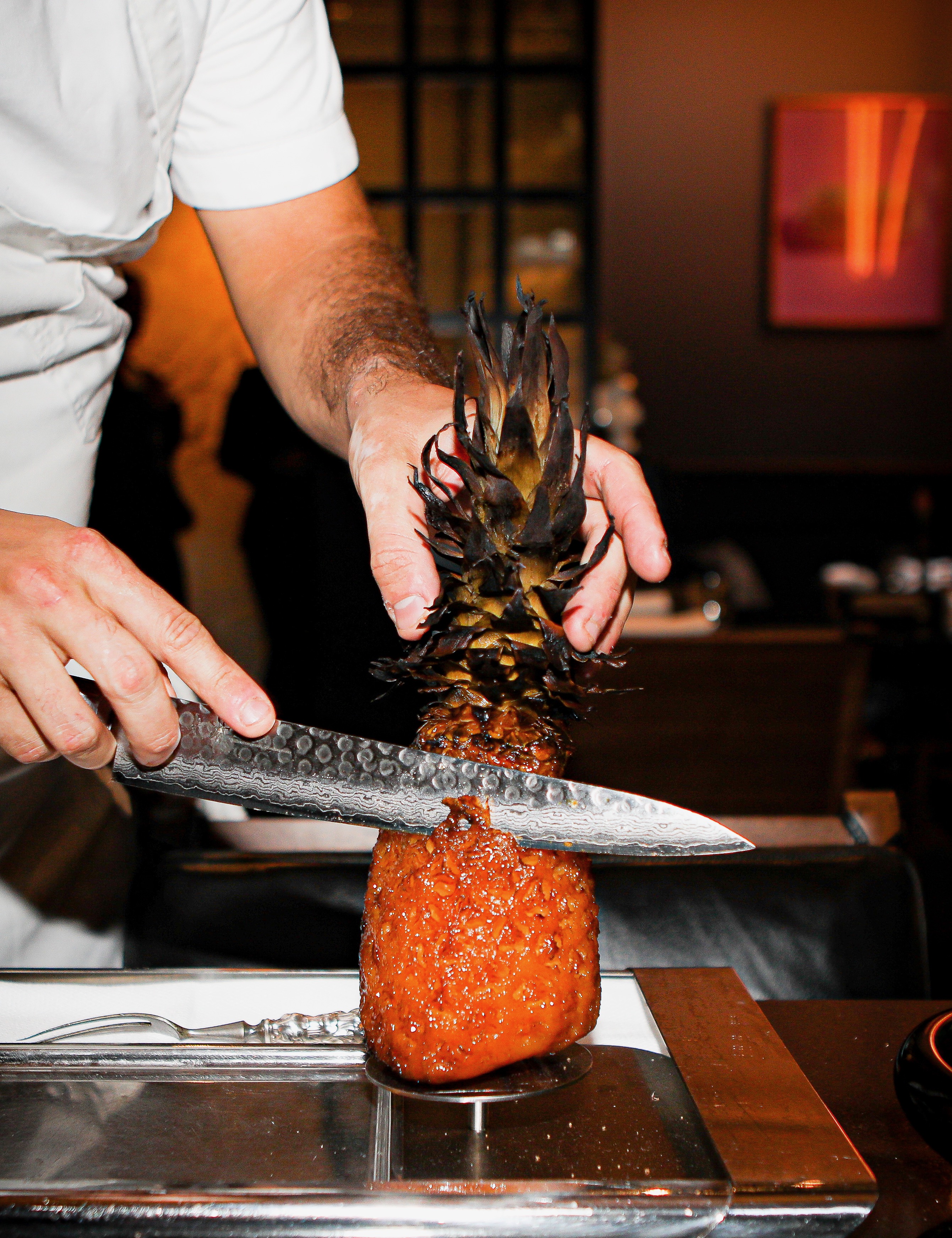
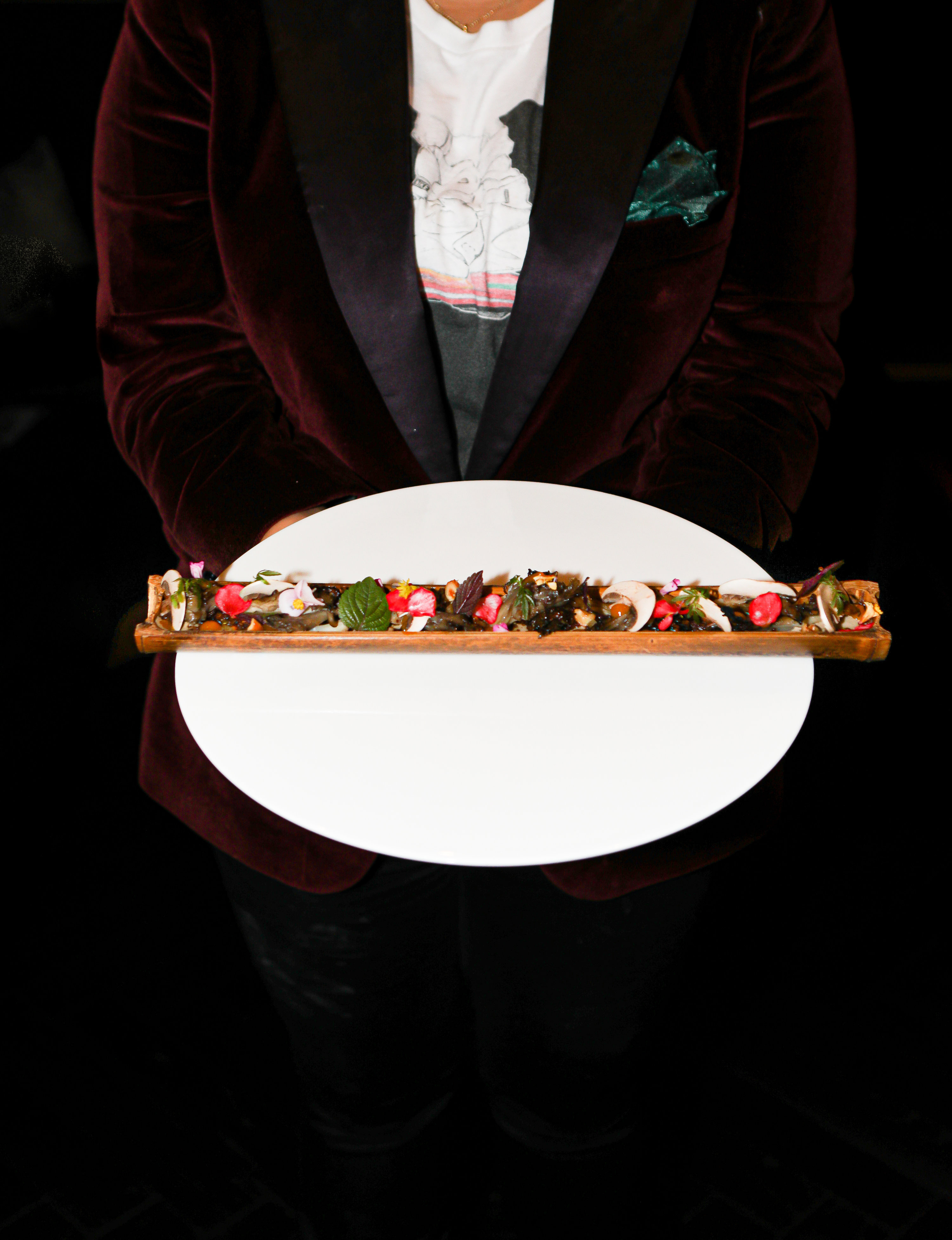
That said, the meal ends with the ultimate grace note: a snifter of amaretto, warmed over a candle and infused with the truffles the kitchen didn’t want to waste when lockdown began in 2020. And pretty much the best party favor/hangover cure ever: a hefty Wagyu burger with all the fixings, boxed to go.
What Tasting Menus Cost Around DC
*Includes service charge
This article appears in the September 2022 issue of Washingtonian.

